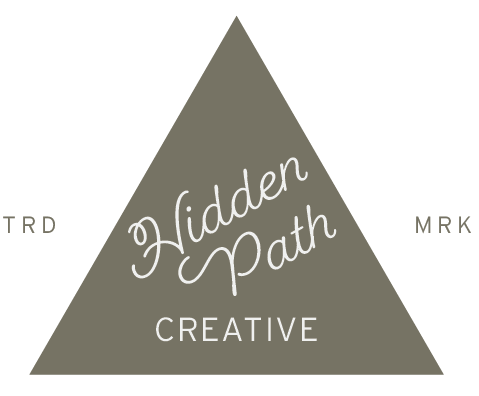The Psychology Behind Effective Packaging Design
In retail, first impressions are extremely important. A product's packaging is usually the initial point of contact a consumer has with a brand, so it plays a vital role in influencing purchasing decisions. Packaging design can greatly affect customer behavior, from capturing attention on a busy shelf to fostering brand loyalty over time. Let's explore into the elements of packaging design are essential in shaping consumer choices.
The Psychology of Packaging Design
Color Psychology
The use of color can evoke emotions and influence how a product is perceived. For example, blue often conveys trust and reliability, while red can evoke excitement and urgency. Effective use of color in packaging can attract the right target audience and create an emotional connection with the product. Brands like Coca-Cola have mastered this; their iconic red packaging is instantly recognizable and associated with excitement and energy.
Shape and Structure
Packaging's shape and structure can help a product stand out and convey its unique qualities. Unusual shapes can grab attention and set a product apart from competitors. For instance, the Pringles can is a great example. Its cylindrical shape not only catches the eye but also fulfills the functional role of keeping the chips intact.
Typography and Branding
Typography plays an important role in establishing brand identity and ensuring readability. Fonts that reflect the brand’s personality and values can leave a lasting impression. For example, consider the elegant typography on a Chanel perfume box, which exudes luxury and sophistication and aligns perfectly with the brand’s image.
The Role of Visual Elements
Imagery and Graphics
Images and graphics on packaging play a integral role in quickly conveying product benefits and creating an appealing visual narrative. High-quality graphics and images can enhance the desirability and perceived value of a product. For instance, vibrant, mouth-watering photos on food packaging have the potential to stimulate appetite and prompt impulse purchases.
Texture and Material
The sensory experience provided by packaging materials can influence consumer perception. Matte finishes, glossy surfaces, and textured materials can all evoke different feelings and reactions. Innovative materials can also enhance the unboxing experience, making it memorable. Apple's use of sleek, minimalist packaging materials is a prime example of how texture can elevate brand perception.
Functional Aspects of Packaging
Convenience and Usability
Packaging that is easy to open, use, and reseal enhances customer satisfaction and encourages repeat purchases. Functional packaging designs that prioritize user convenience can set a product apart. For example, the resealable zip-lock pouches used by many snack brands keep products fresh and make them easy to store.
Sustainability
Growing environmental awareness has made eco-friendly packaging an important factor in consumer decision-making. Sustainable packaging can attract eco-conscious consumers and improve a brand’s reputation. For example, companies like Patagonia, which use recyclable and biodegradable packaging, show a dedication to sustainability that connects with their target audience.
Packaging and Brand Perception
Brand Recognition
Consistent packaging plays a critical role in establishing brand recognition and loyalty. When consumers can easily associate a brand with its packaging, it enhances the brand's visibility in the market. Consider Tiffany & Co.'s iconic blue boxes, which are instantly recognizable and synonymous with luxury and quality.
Storytelling through Packaging
Packaging design can communicate a brand's story and build a deeper connection with consumers. By including elements that showcase the brand's heritage, values, and mission, packaging can create a meaningful narrative. Innocent Drinks is an excellent example of this, using playful and honest messaging in their packaging to convey their dedication to natural ingredients and sustainability.
Case Studies and Real-World Examples
Don't Discount the Value of Brand Equity
Many brands have experienced a notable increase in sales following the redesign of their packaging. For instance, Tropicana's sales declined after an unsuccessful redesign in 2009, but rebounded when they went back to their original, familiar design. This case underscores the significance of comprehending consumer preferences and upholding brand identity.
Impact on Sales
Research indicates that well-designed packaging can boost sales. According to a ISPOS study, 72% of shoppers are influenced to buy a product based on it’s package design and 81% say their gift purchases are affected by the packaging design. These figures emphasize the significant impact of packaging design on consumer choices.
Conclusion
Packaging design is more than just a protective layer for a product; it is a powerful tool that influences customer behavior and drives sales. From color psychology and visual elements to functional aspects and brand perception, every detail matters. Investing in effective packaging design can significantly enhance a product’s appeal and success in the market.
At Hidden Path Creative, I make it my mission to support product-based businesses with standout packaging design to grow their brand recognition and sales.
If you want to work together, please drop me a line here. I love connecting the creators of innovative products.
Pssst, you can also check out Packaging Pronto. This VIP design day provides a unique opportunity for your product packaging to be designed in a day so that you never miss a sale.
Oh, and come say hi on Instagram, and join a community of like-minded product entrepreneurs!












